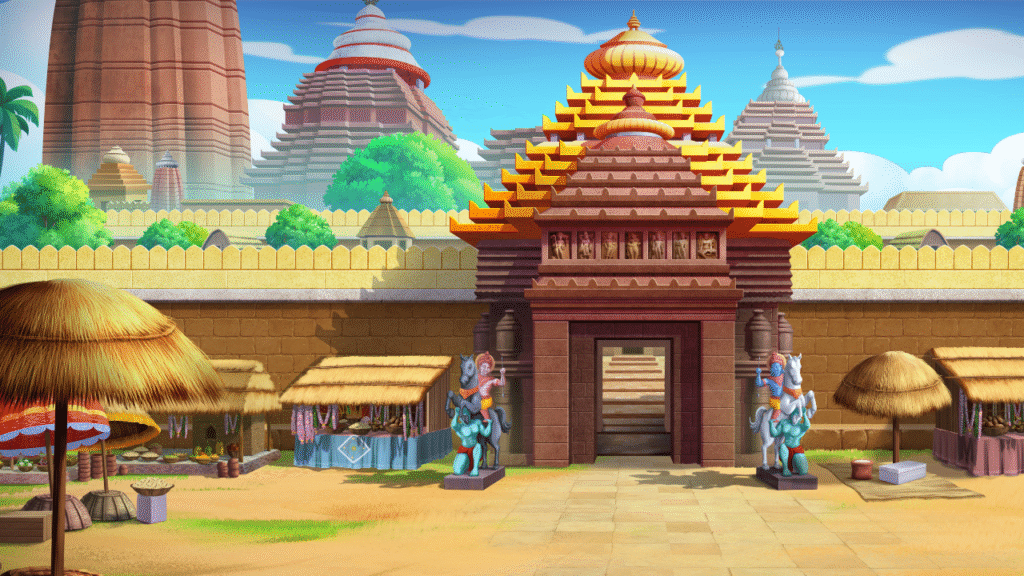
Colonial India and Lord Jagannath: British Encounters, Misinterpretations, and Legacy
Colonial India and Lord Jagannath. The Jagannath Temple in Puri, Odisha, has always been more than a place of worship. It is a symbol of faith, cultural identity, and resilience. During the period of British colonial rule in India, the temple and its grand traditions—especially the world-famous Rath Yatra (Chariot Festival)—became subjects of fascination, controversy, and sometimes misunderstanding. The encounters between the British and Lord Jagannath reveal not only cultural clashes but also the enduring strength of spiritual traditions.
Lord Jagannath – The Eternal Symbol of Faith
Lord Jagannath, worshipped as a form of Vishnu and the presiding deity of Odisha, is revered as the Lord of the Universe. His temple at Puri is one of the most sacred pilgrimage sites in India. The Rath Yatra, where massive wooden chariots carry Jagannath, Balabhadra, and Subhadra through the streets, is one of the world’s largest religious festivals. It brings together millions of devotees across social and cultural boundaries.
For the British who first witnessed these traditions in the late 18th and early 19th centuries, Jagannath was unlike anything they had encountered before. The depth of devotion, the size of the crowds, and the spiritual energy left them both intrigued and bewildered.
Early British Observations – Curiosity and Misinterpretation
When colonial officers and Christian missionaries observed the Rath Yatra, they often misunderstood its meaning. Thousands of devotees pulling enormous chariots with cries of “Jai Jagannath” seemed to them both overwhelming and mysterious. Instead of recognizing the spiritual significance, some early reports described the festival in negative terms.
The word “Juggernaut” entered English during this time, derived from Jagannath, but distorted to mean an unstoppable and destructive force. Missionaries even portrayed the festival as dangerous, failing to appreciate that what they witnessed was an expression of divine love, equality, and devotion.

Colonial Interference in Temple Affairs
Recognizing the importance of the Jagannath Temple in Odisha’s society and economy, the East India Company sought control over it. In 1806, the British administration formally took charge of the temple’s management and revenue. This decision caused resentment among the local people, as the temple was not just an institution but the spiritual heart of Odisha.
The interference did not last long. Facing criticism for involving themselves in religious matters, the British eventually transferred authority back to local trustees. This episode highlighted a truth the colonial rulers had to accept: Jagannath was not a structure to be controlled but a living divine presence commanding the loyalty of millions.
The Rath Yatra as a Cultural Encounter
While misunderstandings existed, the Rath Yatra also served as a cultural bridge. Many British travelers, writers, and artists documented the grandeur of the festival with admiration. They noticed how devotees of all backgrounds—rich and poor, high caste and low caste—came together to pull the ropes of Jagannath’s chariot. For some colonial observers, this unity challenged the stereotypes they held about Indian society being divided only by caste and class.
In this way, the Rath Yatra showed a vision of inclusivity and collective devotion that deeply impressed those who could look beyond their prejudices.
Lasting Impact of Colonial Perceptions
The colonial encounters with Jagannath left behind a complex legacy. On one hand, misinterpretations like “Juggernaut” painted a distorted picture in the West. On the other hand, these same encounters spread the name of Jagannath across the globe. Over time, with India’s cultural revival and the global spread of Hindu traditions, the negative connotations faded, and Jagannath’s true spirit began to be appreciated.
Today, Rath Yatra is celebrated not only in Puri but also in cities around the world, from London to New York. The same Lord whom the British once misunderstood is now embraced by people across cultures.
Resilience of Faith in Colonial Times
The story of Jagannath during colonial India shows that while foreign powers could influence politics and administration, they could not diminish the strength of divine traditions. The British may have misunderstood or tried to control Jagannath’s temple, but the faith of devotees remained unshaken.
Lord Jagannath continues to inspire millions with His message of equality, compassion, and universality. The colonial encounters remind us that while empires rise and fall, spiritual traditions like those of Jagannath endure, carrying forward a legacy of resilience and devotion that no external force can suppress.


Leave a reply here
Your email address will not be published. Required fields are marked *